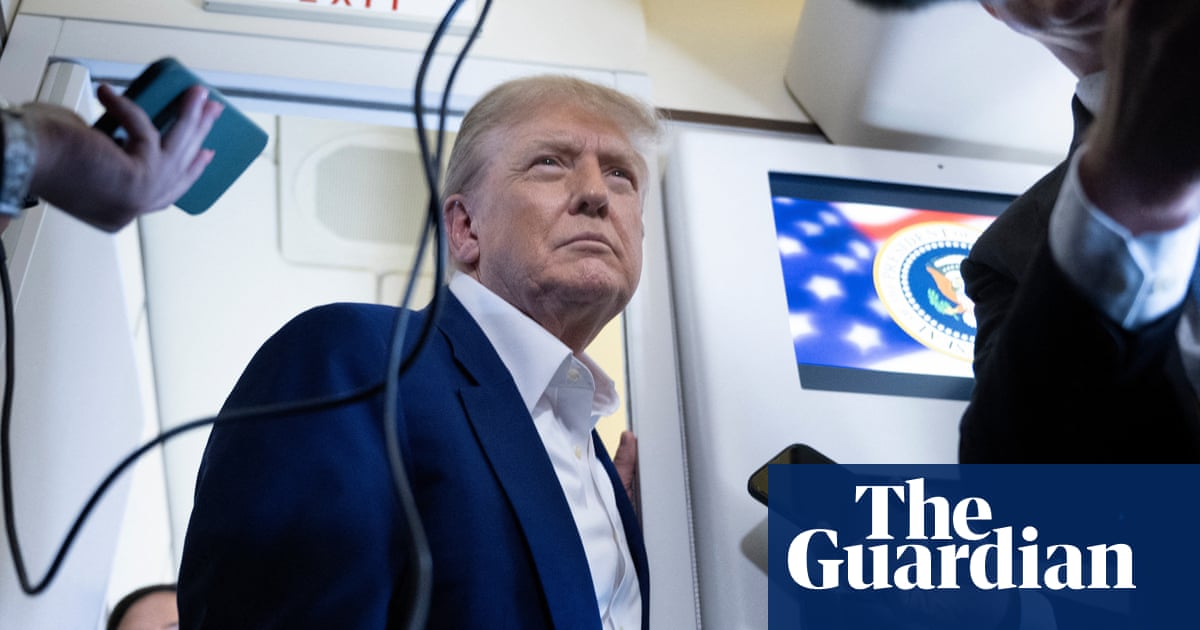Donald Trump’s administration ratcheted up its defence of the US’s weekend attacks on Iran, citing “new intelligence” to support its initial claim of complete success and criticising a leaked intelligence assessment that suggested Tehran’s nuclearprogramme had been set back by only a few months.
The growing row came amid reports that the White House will to try to limit the sharing of classified documents with Congress, according to the Washington Post and the Associated Press.
“This was a devastating attack, and it knocked them for a loop,” Trump said on Wednesday, apparently backing away from comments he’d made earlier in the day, that theintelligence was “inconclusive”.
Senior Trump officials publicly rejected the leaked initial assessment of the Defense Intelligence Agency (DIA) which concluded key components of the nuclear programme werecapable of being restarted within months. Director of national intelligence Tulsi Gabbard said in a post on X that “new intelligence confirms” what Trump has stated.
“Iran’s nuclear facilities have been destroyed. If the Iranians chose to rebuild, they would have to rebuild all three facilities (Natanz, Fordow, Esfahan) entirely, which would likely take years to do,” she said.
CIA director John Ratcliffe in a statement said that new intelligence from a “historically reliable” source indicated that “several key Iranian nuclear facilities were destroyed and would have to be rebuilt over the course of years.”
My statement confirming CIA intelligence which contradicts illegally sourced public reporting regarding the destruction of key Iranian nuclear facilities.pic.twitter.com/Ln3b4hfELc
During a news conference at the Nato summit, Trump briefly ceded the stage to defence secretaryPete Hegseth, who lashed out at the media and claimed reporters were using the leaked intelligence assessment to politically damage Trump. “They want to spin it to try to make him look bad,” he said.
In the wake of the leaked DIA report, the White House will reportedly to try to limit the sharing of classified documents with Congress, a senior official told the Associated Press.
Democratic Senate minority leader Chuck Schumer criticised the reported decision to limit information sharing, saying “senators deserve information, and the administration has a legal obligation to inform Congress precisely about what is happening right now abroad”.
Classified briefings for lawmakers had been scheduled to take place on Tuesday, but were postponed, prompting outrage from members of Congress. The briefings are now expected to take place on Thursday and Friday.
The leaked DIA assessment also found that much of Iran’s stockpile of highly enriched uranium, which would provide the fuel for making any future nuclear warhead, had been moved before the strikes and may have been moved to other secret nuclear sites maintained by Iran. That claim was backed up by the UN nuclear watchdog – the International Atomic Energy Agency (IAEA) – which said it lost “visibility” of the material when “hostilities began”.
However, in an interview with French television, IAEA director-general Rafael Grossi said: “I don’t want to give the impression that it’s been lost or hidden.”
On Wednesday, the White House pushed back on those claims, with press secretary Karoline Leavitt telling Fox News the US had “no indication that that enriched uranium was moved prior to the strikes, as I also saw falsely reported”.
“As for what’s on the ground right now, it’s buried under miles and miles of rubble because of the success of these strikes on Saturday evening,” she said.
The US military said it dropped 14 GBU-57 bunker-buster bombs – powerful 13,600kg (30,000lb) weapons – on three Iranian nuclear sites. Since the attacks, Trump has repeatedly claimed that the sites were “obliterated”.
The White House highlighted an Israeli statement that Iran’s nuclear efforts were delayed by years, while a spokesperson for the Iranian foreign ministry also said the facilities have suffered significant damage.
On Wednesday evening, Trump said that Hegseth – whom he dubbed “war” secretary – would hold a news conference at 8am EST on Thursday to “fight for the dignity of our great American pilots”, referring to the pilots of the B2 bombers that carried out the strikes. He said that “these patriots were very upset” by “fake news” reports about the limited impact of the strikes.
As the row grew over how much the strikes set back Tehran’s nuclear programme, diplomatic efforts to prevent Iran from rebuilding the programme also gathered pace.
Trump said US and Iranian officials would meet soon, resuming a dialogue that was interrupted by the nearly two week war, even as he suggested that negotiations were no longer necessary.“I don’t care if I have an agreement or not,” Trump said, because Iran was too badly damaged to even consider rebuilding its programme. “They’re not going to be doing it anyway. They’ve had it.”
The IAEA has rejected an “hourglass approach” involving different assessments of how many months or years it would take Iran to rebuild, saying it distracts from finding a long-term solution to an issue that had not been resolved.
“In any case, the technological knowledge is there and the industrial capacity is there. That, no one can deny. So we need to work together with them,” Grossi said, adding that his priority was the return of IAEA inspectors to the nuclear sites, the only way he said they could be properly assessed.
Meanwhile, Iranian authorities are pivoting from their ceasefire with Israel tointensifying an internal security crackdownacross the country with mass arrests, executions and military deployments, according to officials and activists.
Iran’s intelligence services have arrested 26 people, accusing them of collaborating with Israel, state media Fars news agency reported.
Some in Israel and exiled opposition groups had hoped the 12-day military campaign, which targeted Revolutionary Guards and internal security forces as well as nuclear sites, would spark a mass uprising and the overthrow of the Islamic Republic.
While numerous Iranians expressed anger at the government, there has been no sign yet of any significant protests against the authorities.
With the Associated Press and Reuters
